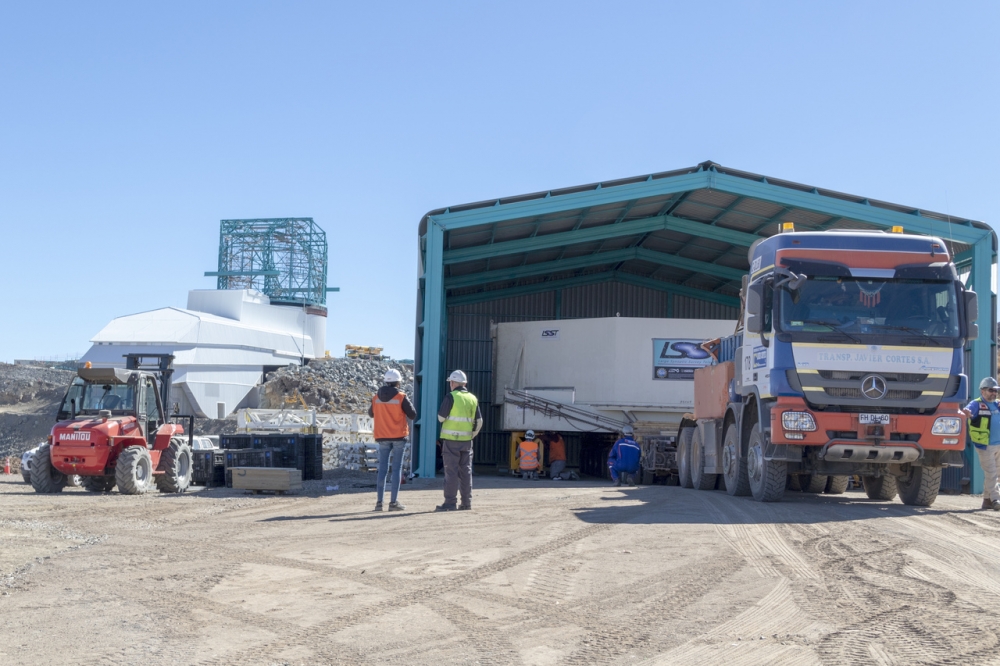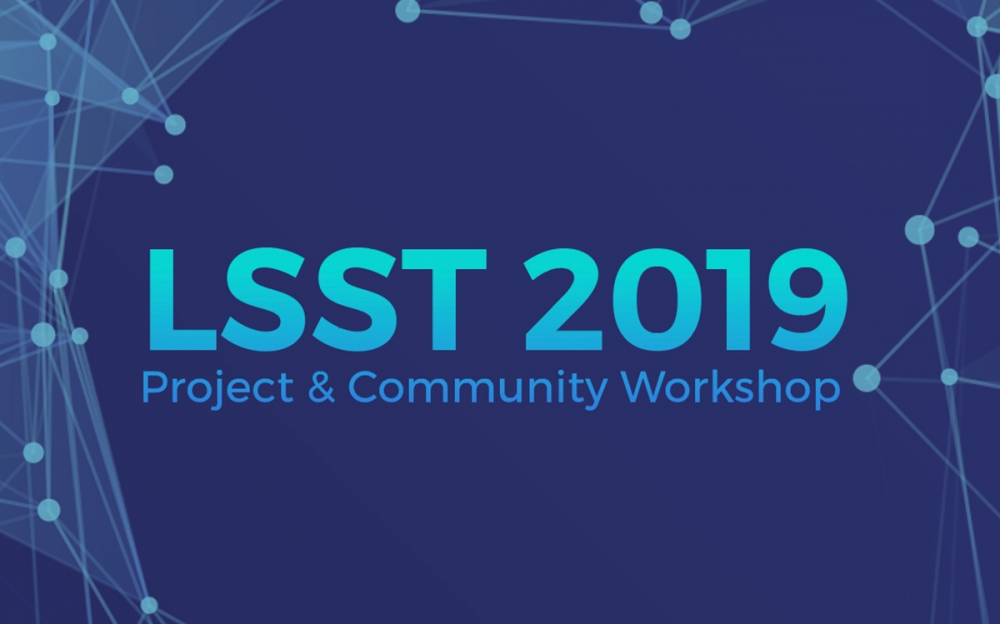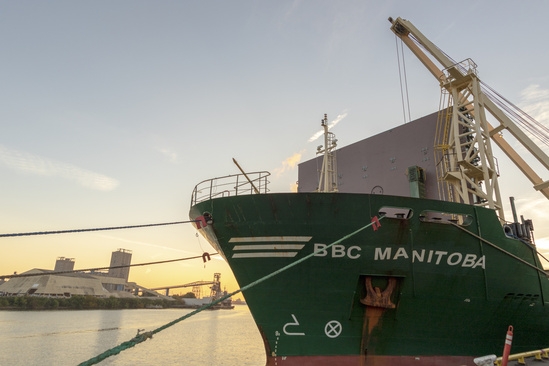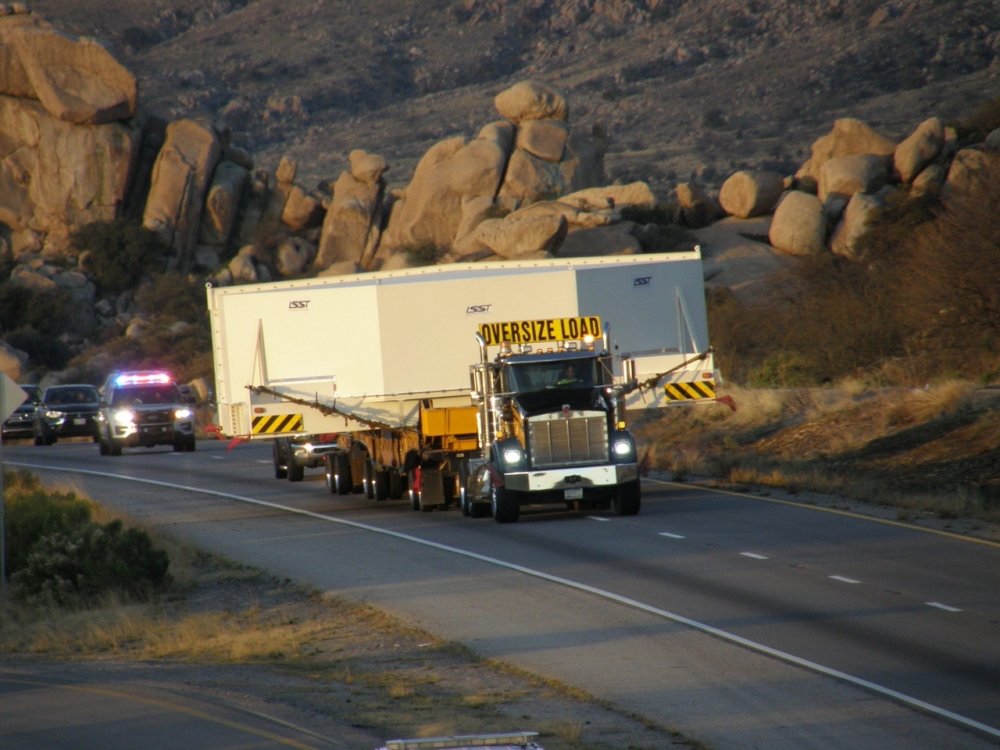A Dark Energy Science Collaboration (DESC) broker workshop took place in Berkeley, CA on February 21 and 22. DESC members met with representatives from the major community alert brokers operating on precursor surveys, to determine whether their envisioned offerings would be suitable for DESC’s needs. DESC’s response to the LSST call for broker Letters of Intent was also discussed. The workshop featured presentations by two LSST Data Management team members; Melissa Graham gave a summary of Prompt Processing and Data Products, and Eric Bellm described the selection of community alert brokers and differences between the LSST and Zwicky Transient Facility (ZTF) alert streams. Meeting talks are available at this link.
Version 17.0 of the LSST Science Pipelines is now available. The latest release from the LSST Data Management team features many improvements, including faster installation times for many users. More information including installation instructions, release notes, and scientific characterization are available at this link.
The LSST Data Management team will hold a Final Design Review of the LSST Science Platform (LSP) on April 10-12. This is a formal internal review of the planned LSP capabilities. The vision, design, and current implementation will be evaluated against the LSST science requirements. Through this review, LSST Data Management will explore how the LSP can best meet the needs of the LSST science user community, as well as identify any potential complications.
At the end of February, members of the LSST Camera Integration and Testing team at SLAC inserted a raft of nine imaging sensors into the body of the LSST Commissioning Camera. This miniature version of the LSST camera will be used for commissioning of the telescope systems. Photos are available in the LSST Gallery.
The LSST calibration screen reflector, which was built in the instrument shop in the LSST Project Office building in Tucson, AZ, is now mechanically complete. The reflector is an important component of LSST’s in-dome calibration system; see photos and read more details in this recent news post.
An important reminder: Daylight Saving Time began in the U.S. on March 10th. Arizona remains on Mountain Standard Time all year, but because the LSST Project uses Pacific Time as its standard, meeting start times for Tucson staff members may change. Online calendars are not always reliable; please check with your meeting organizers to verify start times for upcoming meetings.
LSST CORPORATION NEWS
LSSTC received 19 excellent submissions covering a broad range of LSST science and community preparation activities in response to this year’s Enabling Science Call for Proposals. Nine proposals received full or partial funding this year, for a total award of $149,979. All 19 proposals received describe valuable contributions to science preparation for LSST; however, the call produced many more proposals than could be funded with the available budget.
In addition to the proposals, the committee requested Letters of Intent for support for undergraduate students to attend the 2019 Project and Community Workshop. Letters were received from six institutions representing 22 students. More information on formal Corporation support for this program will be forthcoming.
INFORMATION FOR PROJECT MEMBERS
Below is the second in our ongoing series of reminders about individual communication channels used within the LSST Project. Information about all LSST communication channels can be found in Document-28656.
The current featured channel is Confluence, the LSST Project’s official internal collaboration tool for the development of ideas and plans, and for sharing information. The Project prefers that teams use Confluence to track meeting minutes. Documentation can also be collaboratively developed in Confluence but must then be converted into an official document and placed in Docushare for it to exist as an LSST document.
PERSONNEL NEWS
The Education and Public Outreach team is looking for a UX Developer; information about this and other positions with LSST can be found on the LSST is Hiring web page.
Heinrich Reinking joined the Data Management subsystem as IT Infrastructure Engineer on March 1. Based in La Serena, Chile, Heinrich will be responsible for the operations of highly available and secure servers, networks and science platforms; installing, maintaining, upgrading, and continuously improving LSST’s operating environment.
UPCOMING MEETINGS with LSST INVOLVEMENT
(those with asterisk* are LSSTC funded):
2019 | |
March 26-27 | Project Science Team (PST) meeting, Tucson, AZ |
April 1-2 | AMCL Meeting, Pasadena, CA |
April 8-9 | LSST Corporation Institutional Board Face to Face Meeting, Phoenix, AZ |
April 11-12 | Next Generation Spectroscopy with LSST, Argonne Natn’l Laboratory, Chicago, IL |
May 20-23 | LSST@Asia, Sydney, Australia* |
August 12-16 | LSST 2019 Project and Community Workshop, Tucson, AZ |
August 19-28 | La Serena School for Data Science: Applied Tools for Data-driven Sciences, La Serena, Chile |
NOTICIAS DEL PROYECTO Y CIENTIFICAS
El 21 y 22 de febrero, en Berkeley, California, se llevó a cabo un taller para intermediarios de Dark Energy Science Collaboration (DESC). Los miembros de DESC se reunieron con representantes de los principales agentes de alerta de la comunidad que operan en encuestas de precursores, para determinar si sus ofertas previstas serían adecuadas para las necesidades de DESC. También se discutió la respuesta de DESC a la llamada de LSST para las cartas de intención. El taller contó con presentaciones de dos miembros del equipo de Gestión de Datos de LSST; Melissa Graham dio un resumen de Procesamiento Rápido y Productos de Datos, y Eric Bellm describió la selección de agentes de alerta de la comunidad y las diferencias entre los flujos de alerta de LSST y Zwicky Transient Facility (ZTF). Las charlas de las reuniones están disponibles en este enlace link.
La versión 17.0 de LSST Science Pipelines ya está disponible. La última versión del equipo de Gestión de Datos de LSST presenta muchas mejoras, que incluyen tiempos de instalación más rápidos para muchos usuarios. Más información, incluidas las instrucciones de instalación, las notas de la versión y caracterización científica, están disponibles en este enlace link.
El equipo de Gestión de Datos de LSST llevará a cabo una Revisión de Diseño Final de la Plataforma de Ciencia LSST (LSP) del 10 al 12 de abril. Esta es una revisión interna formal de las capacidades planificadas de LSP. La visión, el diseño y la implementación actual se evaluarán según los requisitos científicos de LSST. A través de esta revisión, Gestión de Datos de LSST explorará cómo LSP puede satisfacer mejor las necesidades de la comunidad de usuarios científicos de LSST, así como identificar cualquier posible complicación.
A fines de febrero, los miembros del equipo de Pruebas e Integración de la Cámara de LSST en SLAC insertaron una serie de nueve sensores de imágenes en el cuerpo de la Cámara de Puesta en Marcha de LSST. Esta versión en miniatura de la cámara de LSST se utilizará para la puesta en marcha de los sistemas del telescopio. Las fotos están disponibles en la Galería de LSST LSST Gallery.
El reflector de la pantalla de calibración LSST, que se construyó en el taller de instrumentos en el edificio de la Oficina de Proyectos LSST en Tucson, AZ, ahora está completo mecánicamente. El reflector es un componente importante del sistema de calibración del domo de LSST; Ver fotos y leer más detalles en esta reciente publicación de noticias news post.
Un recordatorio importante: el horario de verano comenzó en los Estados Unidos el 10 de marzo. Arizona permanece en Mountain Standard Time todo el año, pero debido a que el Proyecto LSST usa la Hora del Pacífico como estándar, los horarios de inicio de las reuniones para los miembros del personal de Tucson pueden cambiar. Los calendarios en línea no siempre son confiables; Consulte con los organizadores de sus reuniones para verificar las horas de inicio de las próximas reuniones.
NOTICIAS DE LA CORPORACION LSST
LSSTC recibió 19 presentaciones excelentes que cubren una amplia gama de actividades de preparación de la comunidad y ciencia de LSST en respuesta a la Convocatoria de Propuestas de Habilitación de Ciencias de este año. Nueve propuestas recibieron financiamiento total o parcial este año, para un premio total de $ 149,979. Las 19 propuestas recibidas describen valiosas contribuciones a la preparación de la ciencia para LSST; sin embargo, la convocatoria produjo muchas más propuestas de las que podrían financiarse con el presupuesto disponible.
Además de las propuestas, el comité solicitó Cartas de Intención para que los estudiantes de pregrado asistan al Taller del Proyecto y Comunitario 2019. Se recibieron cartas de seis instituciones que representan a 22 estudiantes. Más información sobre el apoyo formal de la Corporación para este programa se dará a conocer.
INFORMACIÓN PARA LOS MIEMBROS DEL PROYECTO
A continuación, se encuentra el segundo de nuestra serie de recordatorios sobre los canales de comunicación individuales utilizados dentro del Proyecto LSST. La información sobre todos los canales de comunicación de LSST se puede encontrar en el Documento-28656 Document-28656.
El canal destacado actual es Confluence, la herramienta de colaboración interna oficial del Proyecto LSST para el desarrollo de ideas y planes, y para compartir información. El proyecto prefiere que los equipos utilicen Confluence para rastrear las actas de las reuniones. La documentación también se puede desarrollar en colaboración en Confluence, pero luego se debe convertir en un documento oficial y se debe colocar en Docushare para que exista como un documento LSST.
NOTICIAS DE PERSONAL
El equipo de Educación y Difusión Pública está buscando un desarrollador de UX UX Developer; La información sobre esta y otros puestos en LSST se puede encontrar en la página web de Contratación de LSST LSST is Hiring.
Heinrich Reinking se unió al subsistema de Gestión de Datos como Ingeniero de Infraestructura de IT el 1 de marzo. Con base en La Serena, Chile, Heinrich será responsable de las operaciones de servidores, redes y plataformas científicas de alta disponibilidad y seguridad; instalación, mantenimiento, actualización y mejoras continuas del entorno operativo de LSST.
PRÓXIMAS REUNIONES CON PARTICIPACIÓN DE LSST
(aquellas con asterisco* son financiadas por LSSTC):
2019 | |
Marzo 26-27 | Reunión del Equipo Científico del Proyecto (PST), Tucson, AZ |
Abril 1-2 | Reunión AMCL, Pasadena, CA |
Abril 8-9 | Reunión Cara a Cara de la Junta Institucional de la Corporación LSST, Phoenix, AZ |
Abril 11-12 | Next Generation Spectroscopy with LSST, Laboratorio Argonne Natn’l, Chicago, IL |
Mayo 20-23 | LSST@Asia, Sydney, Australia*; |
Agosto 12-16 | Taller del Proyecto y Comunitario LSST 2019, Tucson, AZ |
Agosto 19-28 | La Serena School for Data Science: Applied Tools for Data-driven Sciences, La Serena, Chile |
















